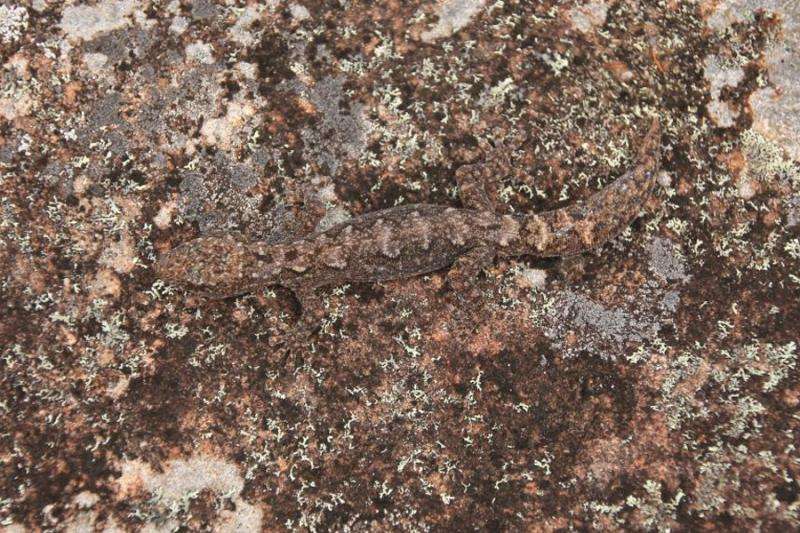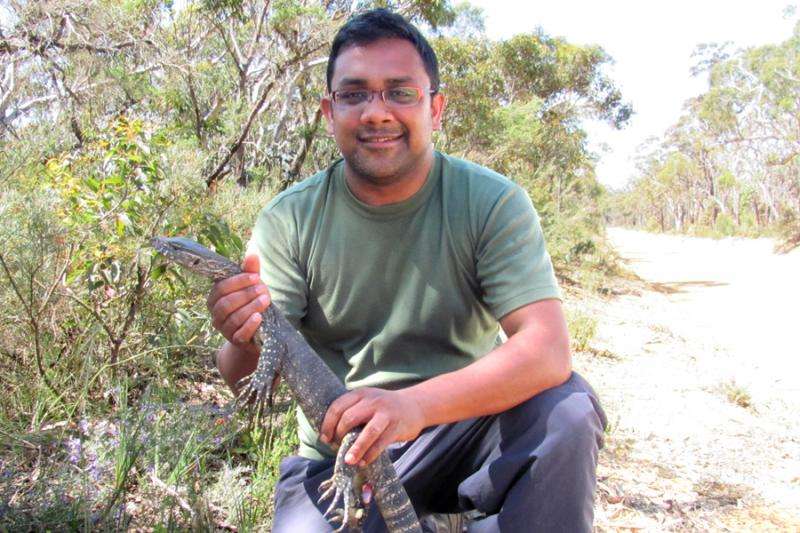Spot the gecko. Image taken at the Morton National Park study site, courtesy of the research team
While we often hear warnings about the potential impact of climate change on humans, new research from UTS Science has found that even the smallest of creatures are likely to be affected by rising air temperatures.
The study, just published in Global Change Biology, focused on the impact of climate change on two populations of the small, rock-dwelling velvet gecko.
The data showed that hotter incubation temperatures, as are likely to be seen with an increase in air temperature due to climate change, resulted in smaller hatchlings with lower survival rates than hatchlings that had been incubated at current nest temperatures.
"When we ran population viability models we found that populations with low survival, as might occur if nests get hotter, go extinct," said one of the paper's authors, Senior Lecturer from UTS Science's School of Life Sciences, Dr Jonathan Webb.
"So it's a fairly bleak scenario. If air temperatures increase by three degrees Celsius, or we get longer heat waves in summer, velvet geckos might disappear from some areas."
The research, undertaken by UTS PhD student Buddhi Dayananda and 'The Webb Lab' research team, found that the velvet geckos' use of rock crevices to lay their eggs made them more vulnerable to the effects of climate change.
PhD student Buddhi Dayananda with a monitor lizard at Morton National Park
"Females don't dig nests in soil like most lizards do, so compared to other lizard nests, velvet gecko nests are more sensitive to changes in air temperature," said Dr Webb.
"We analysed temperature data from the communal gecko nests, and what we found really shocked us – roughly 75 per cent of the variation in temperatures inside communal gecko nests is explained by air temperature."
The velvet gecko populations used in the research also showed long term commitment to particular nesting sites.
"We identified that since 1992 the females have used the same nest sites in Morton National Park, that means they don't have any nest site changing behaviour," said Mr Dayananda.
While the future may seem grim for the velvet gecko, the survival of the species will ultimately depend on the adaptability of both the hatchlings and the females, whose nesting behaviour may need to change in response to increases in air temperature.
"I'm optimistic that some females will make the right choice and lay their eggs in shadier, cooler nest sites," said Dr Webb.
"If females can change their nest site choices, then populations will probably persist under climate warming. If there's no plasticity in female nesting behavior, then it's a fairly bleak outlook for this species."
Research into the long-term survival of the velvet gecko also brings up questions as to the impact of climate change on other animal species.
"Going forward we have to think about what will happen to other egg laying reptiles," said Mr Dayananda.
"This is just the beginning of a broader area of study."
More information: Buddhi Dayananda et al. Communal nesting under climate change: fitness consequences of higher incubation temperatures for a nocturnal lizard, Global Change Biology (2016). DOI: 10.1111/gcb.13231
Journal information: Global Change Biology
Provided by University of Technology, Sydney
























